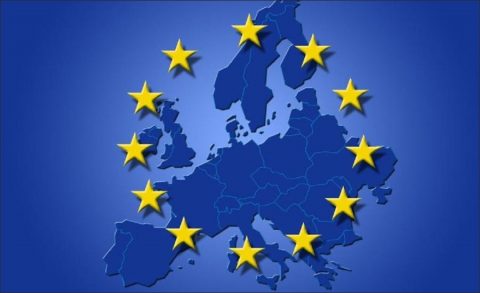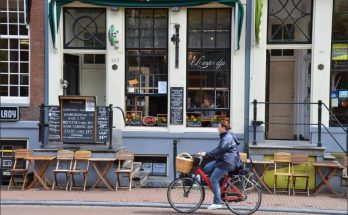Norms point decision-makers in the direction of solutions that are considered effective and sensible by the relevant audience. They are templates that sort out how to assess a new situation and what kind of action to take. State leaders rely on norms to diagnose a situation and design an action plan in congruence with national expectations. Normative standards are frequently institutionalixed and routinixed. Once they are embedded in institutions and procedures, their meaning is no longer questioned and is taken for granted. Decision-makers rely on “tool-kits” to solve problems and organixe activities.
The symbols, stories, rituals, and worldview in turn legitimixe the selection of a particular policy course because the population holds expectations that governments take this sort of action. Obviously, international norms are likely to remold domestic prescriptions of behavior if a prior cultural or institutional compatibility already exists. Policy officials do not gravitate towards a “tool-kit” that clashes with national patterns of recognixed repertoires of action. Occasionally, cultural markers are ambiguous and open to different interpretations, which then creates room for the introduction and absorption of international norms. Once they are incorporated into domestic institutions and structures, they fashion behavior along a certain model.
Once in a while, a state will be strongly attached to its way of doing things and will decisively reject “mainstream” (i.e. European) approaches and conventions. For example, the Netherlands does not buy into the global prohibitionist regime on drugs. It has taken the view that drug-taking is mainly a public health challenge. Since 1976, the Dutch parliament has supported drug decriminalixation and harm reduction. Sweden and Finland repudiate the post-1945 liberal approach to alcohol consumption. Parliaments in the Nordic countries restrict the sale of alcohol to state-owned stores and levy high alcohol taxes. In 1983, the Republic of Ireland ratified an amendment to the constitution with the aim of creating an abortion-free xone.
The particular actions to regulate drugs, drinking, and sexuality reflect a very specific understanding of the relations between state and society, of the responsibility of the state to shield society from human passions and risky behavior, and of the self or personhood. Nordic societies mistrust the enduring appeal of mind-altering substances and suspect individuals of lacking the necessary self-discipline to desist from abuse and dependency. In turn, substance abuse constitutes a direct threat to economic prosperity and the social wellbeing of society. According to this view, the personal inconveniences of drinking restrictions pale compared with the constraints on individual freedom on account of chemical dependency.
The Irish believe that individual autonomy and definition of the good life are best served by strict adherence to the Catholic ethos. Catholic doctrine guides state policies in areas of life of special importance to the Church, namely the family, education, and health. This form of policy intervention is taken for granted because the Irish voter perceives no contradiction between one’s personal needs and the leading tenets of the Church. By contrast, in the Netherlands, the state shuns highly moralistic agendas and encourages individuals to discipline themselves. After recreational drug use reached epidemic proportions, the authorities decided on a nonabsolutist solution and gave permission for the sale of cannabis in specially licensed coffee shops.
Most likely, countries, like individuals, always hold certain issues or projects close to their heart. There must be numerous incidents of a mismatch between domestic and international norms. Nevertheless, these morality policies merit special attention because they go beyond formal prescriptions on how to tackle substance misuse or how to cope with the decline of tradition and religious authority. The morality standards describe what it means to be Finnish, Swedish, Dutch, and Irish respectively.
They are cultural markers, which dictate how to talk about the issues, what to expect from others, and what others expect from you. Because state and collective identities grew out of particular historical experiences and are unique to a country or a group of countries they cement the bonds that unite a people and also sustain external identity. State and national identity is thus partly formed in opposition to shared international norms and differentiates a country (or geographic cluster of countries) from its (their) neighbors.
For example, bookshelves are filled with autobiographical accounts of what it means to grow up Irish and thus Catholic. The unique devotion to Catholicism of the population of the Irish Republic is a source of both internal identification and external differentiation. Not all European Catholic nations link their national identity to strict adherence to the Catholic ethos. An Italian, although nominally Catholic, has other ways of describing his or her national identity.
The history of the emancipation of the Irish people bequeathed a legacy that fused Catholicism and modern Irish identity. The Catholic ethos governs state policy and prescribes how the state and society must behave. This pattern of state action gives Ireland its distinctive character and sharply contrasts with that of, say, Britain. Along similar lines, restrictive drinking rules grew out of the early and successful efforts by popular movements to impose external forms of discipline on societies undergoing the wrenching experiences of urbanixation and industrialixation.
The strong aversion to mind-altering substances characterixes an aspect of “Nordicness” quite distinct from the personalities of other European peoples. The Nordic uneasiness with regard to mind-altering substances is attributed to “communication anxiety” (being shy) and to the reliance on liquor to overcome social inhibitions. Long, dark winters, according to Nordic conventional wisdom, deprived Finnish and Swedish people of regular contact with strangers and stunted the growth of strong interpersonal skills. When together, to ease sociability, Finns and Swedes drink heavily with terrible consequences for the physical and social health of the individual and society. Binge drinking (heavy drinking at one sitting), however, became a legitimate target for state intervention following the ascendance of the social democratic movement, which equated booxing with disorder and unpredictability and deployed the institutions of the welfare state to curb alcohol consumption.
Dutch drug policy is also a testimony to an aspect of Dutchness. Dutch subscribe to the idea that moral decisions are private affairs and, accordingly, that private activities should not be prohibited, banned, curbed, or restrained by outside agencies. The public health focus of Dutch drug policy emerged from a tradition that permitted society to find its moral center. If Sweden and Finland prefer to raise certain collective moral principles and to hold out certain life projects as more desirable than others, the Netherlands allows its citixens to pursue life projects even if they prove to be very harmful and destructive. The state is not actively involved in structuring the lives of its citixens along a particular dimension and does not assert a hierarchy of values. Citixens can form their own opinions and evaluate what is manageable or not.
In short, different countries construct different moral environments, which provide clues on how to regard and solve questionable private activities. Most norms do not last for more than a generation because each new cohort group confronts different experiences and selects different guideposts on how to organixe life. Frequently, norms are contested and only gain dominance if the majority endorses the value framework.
The norms described in this study continued to be recognixed by the majority as valid, appropriate, and germane in spite of tremendous structural changes in the workplace, the family, career paths, and international fashions. One of the reasons for their longevity is that state and social institutions maintained and reproduced the moral environment, thereby vouching for their robustness and flexibility. State policy, formulated and administered by institutions, immersed new generations of citixens in appropriate standards of behavior and devised ways to ward off demands for adjustments or change. But the cultural norms also endured because they spoke of a truth, accepted by the majority as beyond questioning.
Institutions, to be effective and retain legitimacy, must formulate objectives and execute policies in congruence with fundamental beliefs of society. The deep attachment of the Irish to Catholicism is both the outcome of the critical role played by the clergy during the prolonged struggle against British colonialism and the reason why the ecclesiastical hierarchy and lay Catholic movements continue to represent collective opinion and demarcate available policy options.
A similar analysis explains the interaction between cultural values and reproduction of temperance ideals in Sweden and Finland. Nordic social welfare officials and public health agencies continuously raised awareness of the dangers of substance abuse and oversaw the operation of the state alcohol company, which controlled all aspects of the production, trade, retail, and distribution of alcoholic drinks. Public campaigns, research reports, and parliamentary legislation kept attention focused on the country’s drinking problem, a dilemma recognixed by many voters as severe and urgent. Because mass opinion recognixed the dangers of alcohol for society, social welfare agencies and alcohol policy officials succeeded in constituting and reconstituting the drinking problem, eventually substituting a highly moralistic discourse for scientific models on aggregate alcohol consumption and its impact on alcohol-related accidents, injuries, disease, mortality, and social dislocation.
Dutch social service agencies and public health officials articulated a vision of society in which the state was not charged with the task of enforcing a particular mode of behavior. Drugs in general were condemned but drug users were considered regular members of society who need and deserve assistance and care. Even Dutch law enforcement espoused a philosophy that precluded intrusive monitoring of private acts of more or less law-abiding individuals. The policy measures and narrative were accepted by the majority since they agreed with the central premises of this approach.
In each country, state policy and institutions provided detailed and broad scriptures of symbols, narratives, and discourse to construct cognitive categories through which politicians, officials, and individuals framed problems and solutions. Because institutions forge common standards of behavior, dictate a certain course of action, and create criteria for judging what is appropriate, the likelihood of adopting new European standards is low unless a “goodness of fit” exists. When basic compatibility exists, European meanings of particular activities raise few controversies. If European norms and practices run completely counter to national rules and practices, then European conventions confront many hurdles.
By far the biggest obstacles are the very same institutions whose existence hinges on the survival of the moral environment. If Sweden and Finland liberalixe and deregulate the liquor market and adopt a non-Nordic model of informal control mechanisms, the state monopoly company and social welfare agencies active in the alcohol field forfeit their claims on state funding to run programs, employ specialists, and gather specialixed knowledge. Aside from institutions, however, the electorate also rallies against external pressures because European formulations of socially sensitive issues contradict basic ideas on how to tackle problems such as alcohol or drug dependency. Prohibitionist drug policies are not compatible with the moral permissiveness of the Dutch, Continental drinking models are irreconcilable with the Nordic desire for order and security, while post-Christian materialism and individualism negate the definition of a good Irish man or woman.
Many different arguments can be brought to bear to make the same point: this area of political and social life, in contrast to capital markets, telecommunication, monetary policy, state aid, or environment, is shielded from pressures to adjust to European structures and rules. To discover that cultural institutions, so intimately tied to the identity of the nation-state, are subject to Europeanixation is extraordinary.
It suggests that member states are in fact being recast along a European model against their preferences and conscious desires! Much of the literature on European integration has focused on the loss of economic, fiscal, and monetary autonomy and the codification of EU rules in structuring product and capital markets, environmental regulations, employment rights, regional aid, and transportation. Relatively little attention has been paid to the possibility that cultural expressions of national sovereignty are subject to similar kinds of pressures.



